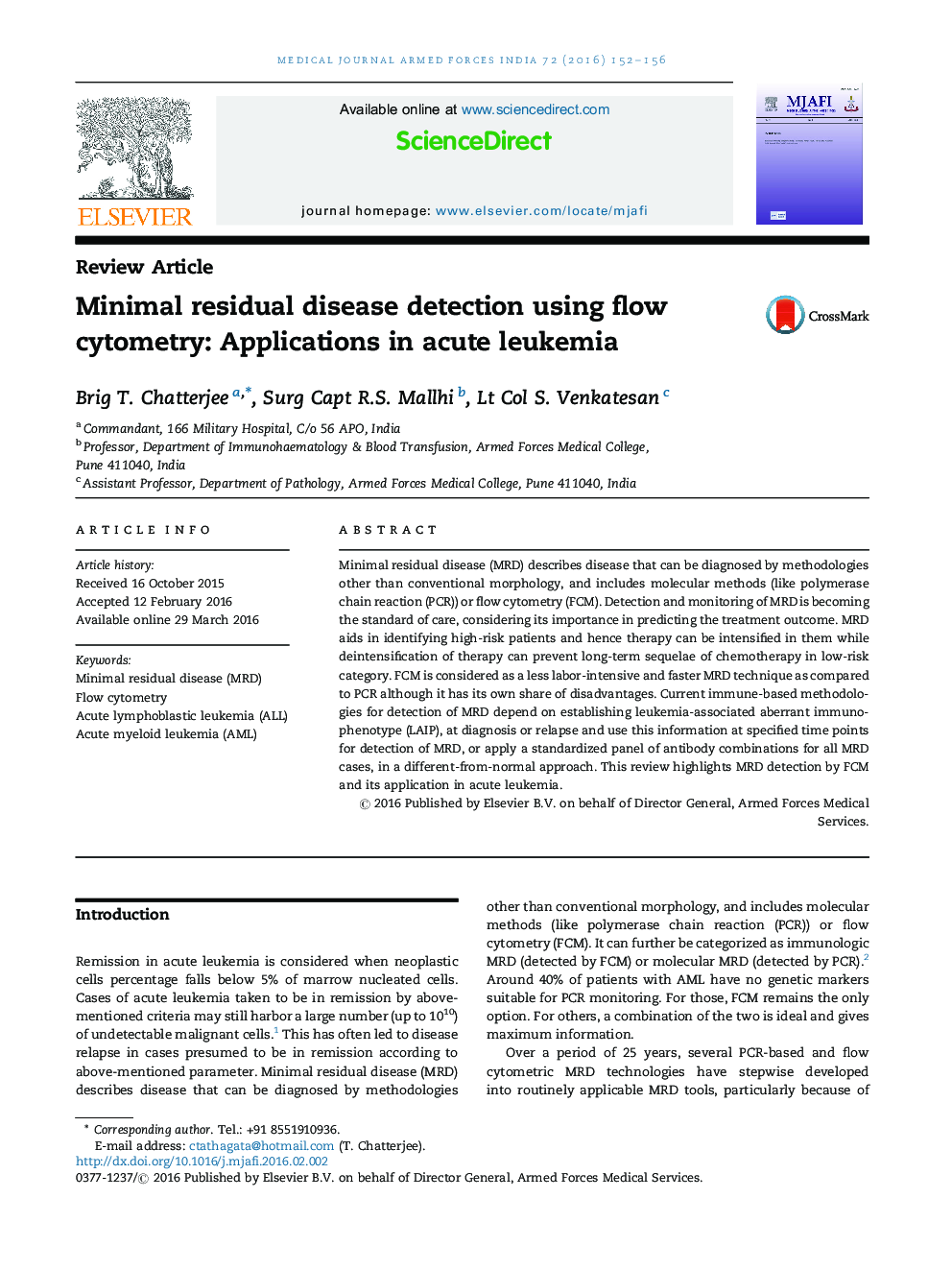| Article ID | Journal | Published Year | Pages | File Type |
|---|---|---|---|---|
| 3160913 | Medical Journal Armed Forces India | 2016 | 5 Pages |
Minimal residual disease (MRD) describes disease that can be diagnosed by methodologies other than conventional morphology, and includes molecular methods (like polymerase chain reaction (PCR)) or flow cytometry (FCM). Detection and monitoring of MRD is becoming the standard of care, considering its importance in predicting the treatment outcome. MRD aids in identifying high-risk patients and hence therapy can be intensified in them while deintensification of therapy can prevent long-term sequelae of chemotherapy in low-risk category. FCM is considered as a less labor-intensive and faster MRD technique as compared to PCR although it has its own share of disadvantages. Current immune-based methodologies for detection of MRD depend on establishing leukemia-associated aberrant immunophenotype (LAIP), at diagnosis or relapse and use this information at specified time points for detection of MRD, or apply a standardized panel of antibody combinations for all MRD cases, in a different-from-normal approach. This review highlights MRD detection by FCM and its application in acute leukemia.
